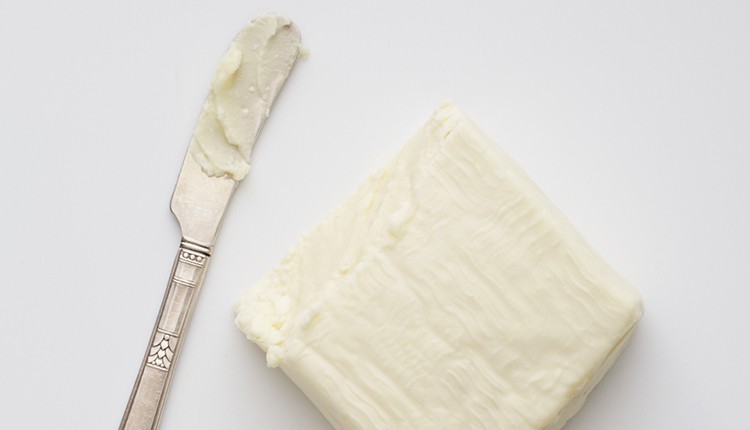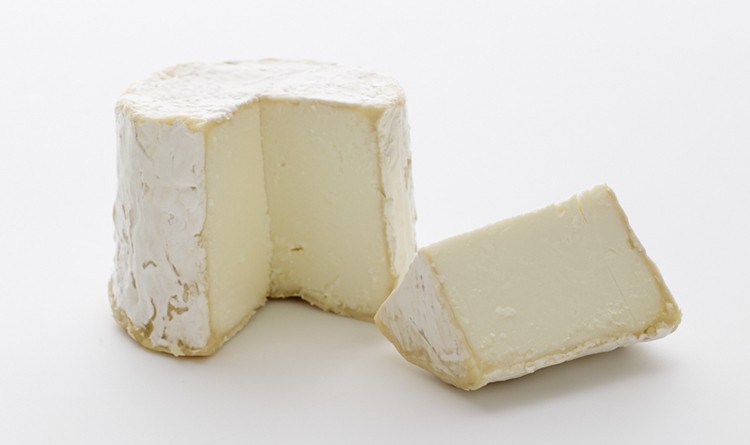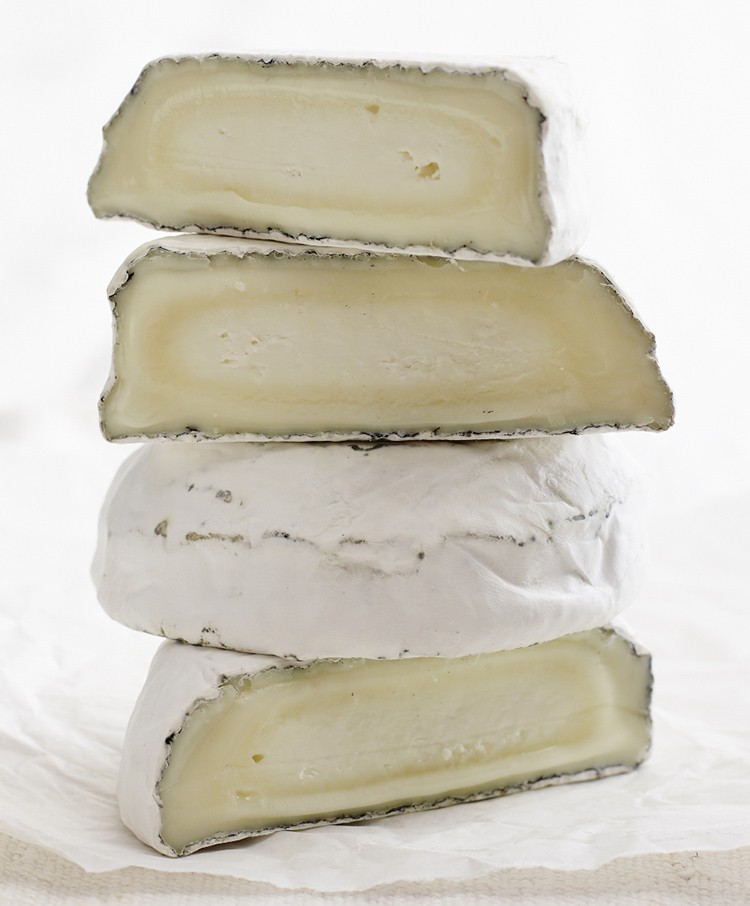
Ladies and gentlemen, get your graters and planes ready: It’s our Best Cheeses guide! In preparation for our upcoming 2016 Best Cheeses issue (on newsstands October 31!), we’ll be breaking down our expertly curated list of 75 oh-so-good wheels and wedges—the stuff of cheese dreams, really.
What’s our process? First we reviewed top finishers from some of the world’s most prestigious contests (held between September 2014 and August 2015): American Cheese Society Judging & Competition, the World Cheese Awards, the United States Championship Cheese Contest, the International Cheese Awards, the Canadian Cheese Grand Prix, the British Cheese Awards, the New Zealand Champions of Cheese Awards, and the Australian Grand Dairy Awards. Then we considered factors like style, flavor, provenance, appearance, and milk type to narrow the field and arrive at the year’s Best Cheeses, arranged by texture.
We’ve already covered hard, flaky cheeses (e.g. gouda and clothbound cheddar), semi-soft, fudgy cheeses (most blues and block cheddars), soft, gooey cheeses (like Époisses and Vacherin Mont d’Or), and firm, toothsome cheeses (such as Comté, Gruyère, and aged block cheddars). Next up in our guide is Semi-Soft, Spreadable Cheeses. Spreadable cheeses can be cut with the dullest of butter knives and spread—at room temperature—on delicate bread without tearing it. While very soft, these cheeses do not readily ooze at room temperature; they may cling to a knife or spoon, but their paste is not sticky. Examples include fresh chèvre, Camembert, and cream cheese.
Cerney Pyramid
- Cerney Cheese
- North Cerney, England
- goat’s milk
Before it’s transformed into this seriously addictive pyramidal cheese, raw goat’s milk from two small producers arrives at Cerney Cheese in frozen blocks. “Goat’s milk is sort of naturally homogenized so it protects itself during the freezing process,” explains head cheesemaker Avril Pratt. Freezing the milk, she says, keeps it “extremely fresh.”
Every step of the five-day make process—from adding starter and rennet to patting on the pyramid’s distinctive oak ash and salt covering—is done by hand. Such artisan production remains aligned with that initiated by Lady Isabel Angus, who first created the cheese in the Cerney House butler’s pantry in 1983.
A former Supreme Champion at the British Cheese Awards, the densely textured cheese earned Super Gold at the 2014 World Cheese Awards. Cerney’s two-person team relies on the seasonal rhythms of the goatherds, producing an average of 550 pyramids per week.
“In spring we have lots of milk,” Pratt says. “But around Christmas, when we need a lot of milk, there isn’t any. We want to have Christmas in June, really.”
FLAVORS: Almonds, citrus, cream
PERFECT PAIRING: A glass of chilled Sancerre is tops with this cheese.
Cream Cheese
- Swiss Valley Farms
- Davenport, Iowa
- cow’s milk
This farmer-owned co-op, which has more than 600 members in Iowa, Wisconsin, and Minnesota, started producing dairy products in 1958. (It changed its name from the Mississippi Valley Milk Producers Association to Swiss Valley Farms and relocated to its current Davenport headquarters in 1981.) A multiple domestic and international award-winner, the company’s cream cheese is notable for its depth of flavor and smooth, creamy texture; it’s not small-batch, but it sure tastes like it.
FLAVORS: Fresh cream, lactic, sweet
PERFECT PAIRING: Purists should slather this cheese on a whole-grain bagel or toast, but it’s also dreamy in dips and spreads.

Narrangansett Creamery Crescendo
Crescendo
- Narrangansett Creamery
- Providence, R.I.
- cow’s milk
When we think of Stracchino di Crescenza–style cheese, our minds wander to a rindless square with a soft, thick paste—and Narragansett Creamery’s take on the Italian favorite follows suit. Dubbed Crescendo, the Ocean State–made curd is crafted gently by hand, ensuring a mouth-coating consistency. “It’s a texture you can’t get from machinery alone,” owner Mark Federico asserts. “Some say it’s like Brie without the rind.”
Its flavor, however, is a far cry from the mushroomy French fromage. With aromas of cheese curds and buttered popcorn, the cheese is unbelievably creamy on the palate, with floral yet tangy-sharp notes reminiscent of hops. It’s no wonder Crescendo snagged a blue ribbon at the 2015 American Cheese Society Judging & Competition—and for this small, family-run creamery, that recognition makes all the difference.
“We are very proud of our team members,” Federico says. “From the front office to the milk vat to the loading dock, their dedication contributes to our success and sets us apart.”
FLAVORS: Cream, butter, hops, grass
PERFECT PAIRING: Slather Crescendo on dried-fruit focaccia (the acid cuts the cream) and drizzle with warmed honey.
Flower Marie
- Golden Cross Cheese Co. Ltd.
- Lewes, England
- sheep’s milk
No stranger to culture’s pages, Flower Marie is a raw sheep’s milk cheese with a talent for tickling judges’ fancies.
Which makes sense, as it was a youthful flight of fancy that saw creamery owner Kevin Blunt cast aside his biochemistry degree and turn to livestock and dairy farming on Greenacres Farm. Blunt and his wife, Alison, started making cheese after they bought neighbor Regis Dussartre’s recipes, goats, and milking parlor. In turn, Dussartre schooled the Blunts in French cheesemaking, paving the way for the pair to launch Golden Cross Cheese Co. in 1989.
Today Golden Cross is respected for its handmade goat’s and sheep’s milk cheeses. Kevin and Alison are joined by their son, Matthew, in crafting an average of 240 small ivory blocks of white-mold-ripened, brine-washed Flower Marie daily (as the cheese matures, mushroom and caramel notes dominate and the paste turns soft and oozing). Does Kevin ever regret turning his back on biochemistry? “Absolutely not,” he says, without hesitation.
FLAVORS: Caramel, mushrooms, lemon
PERFECT PAIRING: Flower Marie is irresistible with crisp sauvignon blanc.

Many Fold Farm Garrets Ferry
Garretts Ferry
- Many Fold Farm
- Chattahoochee Hills, Ga.
- sheep’s milk
A mere 30 miles from a major metropolis might not be where you’d expect to encounter a rural community focused on farming. But that’s exactly what you’ll find in Chattahoochee Hills, Ga., a district that has managed to preserve its agricultural way of life in the face of Atlanta’s urban sprawl. It’s the home of Many Fold Farm, whose cheeses—including crottin-style Garretts Ferry—swept all three sheep’s milk categories at the 2015 American Cheese Society Judging & Competition. But winning didn’t come easy: “I almost scrapped Garretts Ferry,” cheesemaker and owner Rebecca Williams says. “It was making me nuts trying to get it right.”
The bloomy-rind cheese is semi-lactic, meaning the make process requires time, patience, and a delicate hand. Curds set for 18 to 24 hours before being ladled into forms, where they drain an additional 36 hours. Then the small rounds age three to six weeks. For Williams, though, slow is best.
“Sheep’s milk is high in protein—the longer acidification helps the proteins break down and gives the cheese more flavor,” she says. And Garretts Ferry has flavor in spades: sheepy fat envelops the palate with tart, floral, and acidic notes. As the cheese ages, it becomes meatier, and a touch smoky—vaguely reminiscent of bacon.
(Read our cheesemaker profile of Many Fold Farm from our Summer 2016 issue!)
FLAVORS: Mushrooms, butter, green apple
PERFECT PAIRING: Cut through the cheese’s sheepy sweetness and rich fat with sips of clean Kölsch-style Harpoon Brewery Summer Beer.
Gorgonzola Dolce
- Arrigoni Battista
- Pagazzano, Italy
- cow’s milk
Gorgonzola Dolce has been around since the 12th century, but that doesn’t mean all versions of this PDO cheese are created equal. For four generations, Arrigoni Battista has toiled to improve the production and aging of classic Italian cheeses (its current factory is divided into different sections for washed-rind and blue-veined styles). Dolce, which means “sweet” in Italian, refers to milder, creamier Gorgonzolas that are aged only about two months— Naturale or Piccante varieties are often aged three months or longer, becoming spicier and more pungent.
Arrigoni Battista’s Dolce version—a Super Gold at the 2014 World Cheese Awards—is accessible and mild, with an extra sweetness to it. It’s best enjoyed if left out at room temperature for an hour or so, until the cream-colored paste mottled with bluish veins starts to become “buttery and melty,” export manager Roberta Cavagna says.
FLAVORS: Cream, sweet, tangy
PERFECT PAIRING: Melt this cheese slowly with butter and cream to create a decadent pasta sauce.

Fromagerie du Presbytère Lalibiteré
Laliberté
- Fromagerie du Presbytère
- Sainte-Élizabeth-de-Warwick, Canada
- cow’s milk
This soft, Brie-style round hails from Québec—specifically, a beautiful, circa-1936 priest’s home in the village of Sainte-Élizabeth-de-Warwick. Brothers John and Dominic Morin acquired the property in 2005 and have been completing renovations and crafting award-winning cheeses—including Laliberté, the 2015 Canadian Cheese Grand Prix Grand Champion—under its stately roof ever since. The setting is made even more idyllic by the dairy across the street, which provides the creamery with fresh Holstein and Jersey cow’s milk daily.
Named after sculptor Albert Laliberté, also from Sainte-Élizabeth-de-Warwick, the surface-ripened triple cream is firm and possesses a subtle aroma of mushrooms and cream when young; with age, it develops a savory meatiness akin to roasted cruciferous vegetables.
FLAVORS: Cream, butter, mushrooms, tangy
PERFECT PAIRING: Laliberté is wonderful after dinner with fresh pomegranate or pear. Pick prosecco to serve alongside a young round; opt for a spicier red to complement a more mature cheese.
Little Bloom
- Tide Mill Creamery
- Edmunds, Maine
- cow’s and goat’s milk
On the rugged coast of Downeast Maine, 15 minutes from the easternmost point in the US, sits Tide Mill, an organic farm and creamery. The land has been in owner Rachel Bell’s family for nine generations, but it wasn’t until recently that she and her husband, Nate, started crafting award-winning cheeses, including the Camembert-style Little Bloom, which took home a first-place ribbon at the 2015 American Cheese Society Judging & Competition.
“You can’t separate the cheese from the land,” says Rachel, of the wooded paddocks and seaside pastures where Tide Mill’s animals graze. “I am truly a farmer at heart, and cheese is the best way to express my love for this place.”
Delightfully simple in flavor and appearance, Little Bloom is made from a blend of goat’s and cow’s milk—two-thirds goat and one-third cow, specifically, a ratio that provides “the best of both worlds,” Bell says. Before wheels are set aside to age one to two weeks, curds are rubbed with vegetable ash and local sea salt.
FLAVORS: Cream, earth, lactic
PERFECT PAIRING: Opposites attract when this rich, mixed-milk cheese meets prosciutto di Parma—the rind’s sharpness keeps things from getting too decadent.

Tide Mill Creamery Little Bloom
Nettle Farmer’s Cheese
- Sweet Rowen Farmstead
- West Glover, Vt,
- cow’s milk
Bottled milk from Randall Lineback cows is the core business at Sweet Rowen Farmstead in West Glover, Vt. But a line of cheeses, overseen by creamery manager Blair Johnson, plays a brilliant supporting role. Along with feta, cheddar curds, and two lactic-set, bloomy-rind cheeses, Sweet Rowen produces five unripened farmer’s cheeses in various flavors, including this best-selling, award-netting nettle version.
Johnson, who’s done stints at Jasper Hill Farm in Vermont and Cedar Grove Cheese and Uplands Cheese Company in Wisconsin, started at the small creamery just over a year ago. When he arrived, one of the farm’s cheeses was called Wood Nettle—a dry-salted cheese rubbed with dried nettles. The cheese had potential, Johnson says, but he thought it might benefit from a different format. He liked the “bright, almost spinach-y flavor” that nettles imparted to the milk, so he tried mixing leaves into a farmer’s cheese instead. Sure enough, infusing the tangy curds with the herbaceous plant produced a winning combination.
FLAVORS: Grass, tangy, vegetal
PERFECT PAIRING: Wake up right: Balance this cream cheese–esque prizewinner’s tang with grainy, earthy toast and draw out its smooth, herbaceous notes with rooibos tea.

Sweet Rowen Nettle Farmer’s Cheese
Warby Red
- Boosey Creek Cheese
- Murray Region, Australia
- goat’s milk
“This is a cheese you want to keep coming back to,” said Australian Grand Dairy Awards chief judge Neil Willman, after Warby Red won the Champion Washed Rind at the 2015 contest. Indeed, it’s a little cheese with a big, funky flavor profile, balanced savory notes, and a creamy finish.
Cheesemaker Ken Cameron comes from a long line of dairy farmers, and along with his wife, Margi, established Boosey Creek Cheese in 2007 on a farm owned by his parents. “Boosey Creek Cheese started as a hobby, so to now have a product that’s among the best in Australia is really exciting,” he says. It’s a true farmstead operation, with all of the milk coming from the family’s herd of more than 400 pasture-raised Holstein Friesian cows. While Warby Red is made year-round, it really comes into its own during late winter Down Under (July–September), when the humid weather helps create a moist rind and spreadable paste that’s oh-so-smooth.
FLAVORS: Butter, meat, savory
PERFECT PAIRING: Enjoy Warby Red with golden raisins and sourdough bread, or do as Cameron does: Smear it on raisin toast for a true breakfast of champions.
photographed by Andrew Purcell, styled by Carrie Purcell




